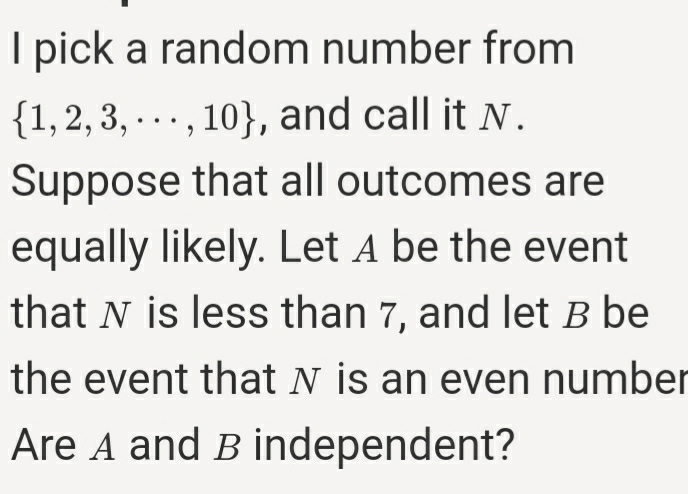Ex.The probability of a coin which is flipped 50times and landed on heads 28 times.
Ex.A Cricket Fan may predict his/her favourite team score and guess that it will win.
Ex.The probability of getting 3 in a dice.
Ex.Tossing a coin
It will always less that 1.
1. Simple Event/Elementary Event
If the event E has only one sample point of a sample space, it is called a simple event or an Elementary Event. It is an event that consists of exactly one outcome. Let us understand this with an example. Say you throw a die, the possibility of 2 appearing on the die is a simple event and is given by E = {2}.
2. Compound Event
As opposed to a simple event, if there is more than one sample point on a sample space, such an event is called Compound Event. It involves combining two or more events together and finding the probability of such a combination of events.
For example, let us take another example. When we throw a die, the possibility of an even number appearing is a compound event, as there is more than one possibility, there are three possibilities i.e. E = {2,4,6}.
3. Certain Event/Sure Event
Just as the name suggests, an event which is sure to occur in any given experiment is a certain event. The probability of this type of event is 1.
4. Impossible Event
On the other hand, when an event cannot occur i.e. there is no chance of the event occurring it is said to be an impossible event. The probability of this event is 0. Like the probability that the card you drew from a deck is both red and black is an impossible event.
5. Equally likely Events
When the outcomes of an experiment are equally likely to happen, they are called equally likely events. Like during a coin toss you are equally likely to get heads or tails.
6.Complimentary Events
The non-occurence of an event is called complimentary event. It is denoted by " A' " or " Ac"
7. Mutually Exclusive Events
Two events A and B is called Mutually Exclusive events if A⋂B=ф
- (Non-negativity) P(A) ≥ 0 for every event A.
- (Additivity) If A and B are two disjoint events,then the probability of their union is P(A U B)= P(A) + P(B)
- (Normalization) The probability of entire Sample space ᘯ is equal to 1. i.e;P(ᘯ)=1
Conditional Probability
The conditional probability of an event B is the probability that the event will occur given the knowledge that an event A has already occurred. This probability is written P(B|A), notation for the probability of B given A. In the case where events A and B are independent (where event A has no effect on the probability of event B), the conditional probability of event B given event A is simply the probability of event B, that is P(B).[Note: P(A) in P(A|B) is called Prior Probability]
Independence:
For two events A and B associated with a sample space S, the sample space can be divided into a set A ∩ B′, A ∩ B, A′ ∩ B, A′ ∩ B′. This set is said to be mutually disjoint or pairwise disjoint because any pair of sets in it is disjoint. Elements of this set are better known as a partition of sample space.
This can be represented by the Venn diagram as shown in fig. 1. In cases where the probability of occurrence of one event depends on the occurrence of other events, we use total probability theorem.
In Other WordEXAMPLE:
I have three bags that each contain marbles:
- Bag 1 has red and blue marbles;
- Bag 2 has red and blue marbles;
- Bag 3 has red and blue marbles.
I choose one of the bags at random and then pick a marble from the chosen bag, also at random. What is the probability that the chosen marble is red?
Solution:
Let be the event that the chosen marble is red. Let be the event that I choose Bag We already know that
We choose our partition as . Note that this is a valid partition because, firstly, the 's are disjoint (only one of them can happen), and secondly, because their union is the entire sample space as one the bags will be chosen for sure, i.e.,Using the law of total probability, we can write
Bayes' Rulesuppose that we know Example: In the above example suppose we observe that the chosen marble is red. What is the probability that Bag 1 was chosen? Conditional IndependenceTwo events and are conditionally independent given an event with if The conditional Probability of A given B is represented by P(A|B). The variables A and B are said
to be independent
if P(A)= P(A|B) (or alternatively if P(A,B)=P(A) P(B) because of the formula for conditional Probability). Example1 Suppose Norman and Martin each toss separate coins. Let A represent the variable "Norman's toss outcome", and B represent the variable "Martin's toss outcome". Both A and B have two possible values (Heads and Tails). It would be uncontroversial to assume that A and B are independent. Evidence about B will not change our belief in A. |








